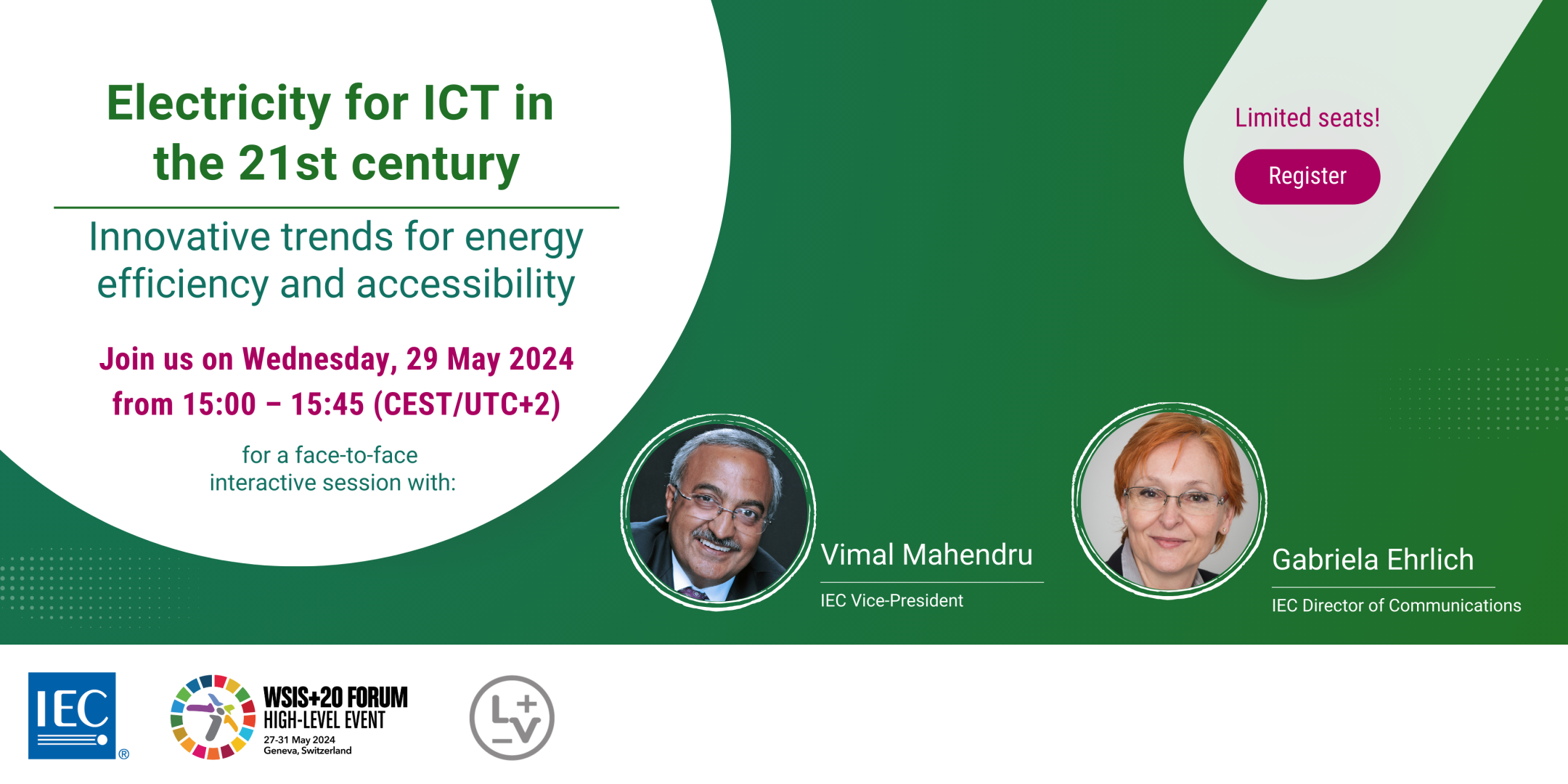Electricity for ICT in the 21st century
International Electrotechnical Commission
Session 284
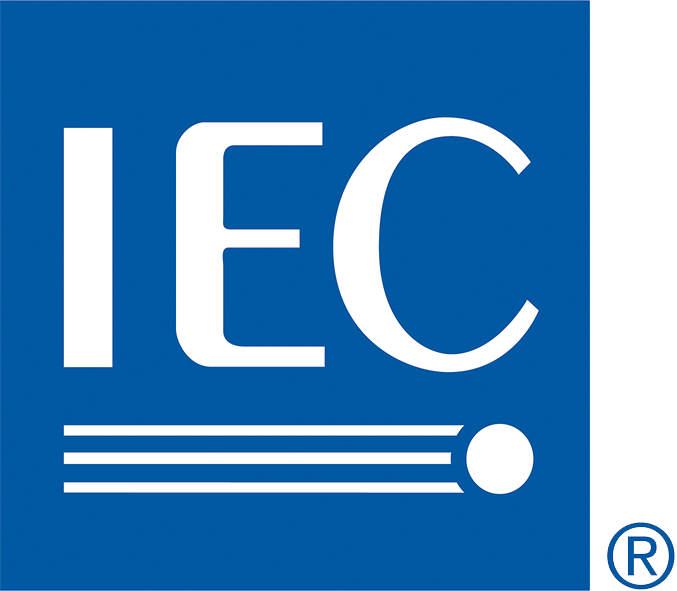
A fireside chat with IEC Vice-President on making electricity efficient and accessible
Electricity is the golden thread that that weaves through all the UN Sustainable Development Goals. Efforts that contribute to enabling affordable and clean energy (SDG 7) within and beyond the context of information and communication technologies (ICT), can therefore help facilitate progress for all other economic, social and environmental development goals. With this in mind, the session focuses on the technological and environmental factors driving a shift in the fundamental ways we think of electricity.
- What are the megatrends in our electricity infrastructure driving this change and why is it important to understand and leverage these for ICT?
- How can we make energy accessible for everyone?
- What technical solutions can help prevent wastage of energy, and incorporate more renewable sources for electricity?
What is the role of international standards in the electricity for ICT in the 21st century?
These are some of the questions Gabriela and Vimal will talk about, with an open floor for jumping into the conversation and participate in the ensuing discussion.
At the session you can
- Learn more about how LVDC is creating an impact in ICT and elsewhere.
- Discover new possibilities for efficient electricity access.
- Follow the latest efforts in standardization for effective implementation.
- Speak directly to the high-level strategists shaping international standardization in the area.
- Share your perspective by participating in the interactive session.
The session is interactive with scope for audience participation throughout the session.
More about LVDC?
LVDC acts as an enabler for electricity access by the use of locally generated DC power through non-conventional sources, such as sun or wind. It also brings greater energy efficiency.
Nowadays, the majority of devices (including ICT) we use in our homes, offices, healthcare facilities or data centres operate on DC power. LVDC removes the need to convert from DC to AC and then back again to DC, as the traditional, top-down AC structure requires.
This makes DC less wasteful and more cost-effective.
Besides helping reduce the global carbon footprint, LVDC can be especially useful in developing countries, as it provides affordable and sustainable electricity access to people who would otherwise have to wait many years for a connection to the main electricity grid.
IEC is leading efforts to make LVDC technology safe for use everywhere where DC power can be used directly without losses in energy conversion.
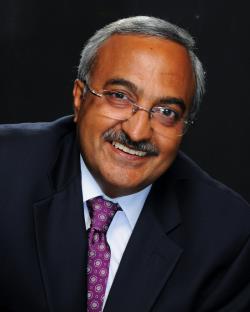
Mr Mahendru began his three-year term as IEC Vice-President and Chair of the Standardization Management Board (SMB) on 1 January 2023. He is deeply involved in many IEC activities since more than 9 years and has occupied leadership roles and assignments for more than 8 years.
He is also the Chair of the IEC Systems Committee for Low Voltage Direct Current and Low Voltage Direct Current for Electricity Access (SyC LVDC). As such he is at the heart of the latest efforts in international standardization in the area, and developments in the technology that can help address socio-economic and environmental challenges.
In addition he is the IEC Special Envoy for UN Sustainable Development Goals (UN SDGs); member of the IEC Board Task Force on UN SDGs; Member of the IEC Business Advisory Committee (BAC); and Chair, Convenor or Co-Convener for several SMB related boards, strategic groups, and ad hoc groups.
Mr Mahendru is currently the CEO of Valuon Strategic, India, a management advisory company; member of the Electrotechnical Divisional Council of the Bureau of Indian Standards, Government of India, and actively engaged with governances at the Indian Electric and Electronic Manufacturers Association (IEEMA). Previously, Mr Mahendru was President of Legrand India and held leadership positions at Indo Asian Fusegear Limited. He holds an MBA in International Business from the George Washington University, US and a Bachelor’s in Engineering from Thapar College of Engineering and Technology, India.
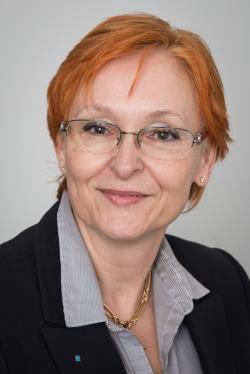
With Swiss federal degrees in business, and in communication, Gabriela Ehrlich serves as Director of Communications for the IEC. An important part of her function is to explain to non-technical audiences how the IEC global institutional framework allows policy makers to fulfill their policy objectives to address global challenges such as equal access to energy, safe electrification, energy efficiency improvements, climate change mitigation, industrial and consumer safety, and cyber security, among others.
The technical work of the IEC in standardization, testing and certification provides the essential foundation on the path to net zero, sustainability and circular economy and addresses targets and indicators of all 17 UN Sustainable Development Goals. It is fully aligned with the WTO TBT agreement. The IEC brings together around 170 countries (each member country has a single vote and represents all national stakeholders) and is relevant to nearly the whole global population. It also encourages developing countries to access its work without the financial burden of membership. More than 30’000 global experts contribute to the development of IEC international standards and the IEC Conformity Assessment Systems.
-
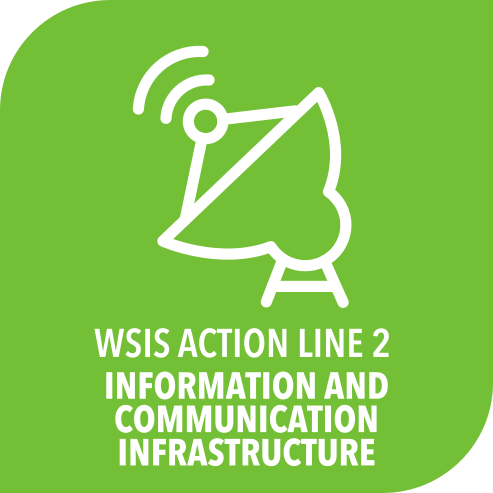 C2. Information and communication infrastructure
C2. Information and communication infrastructure
-
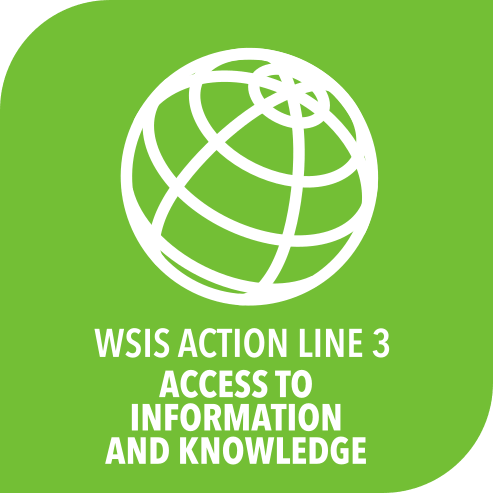 C3. Access to information and knowledge
C3. Access to information and knowledge
-
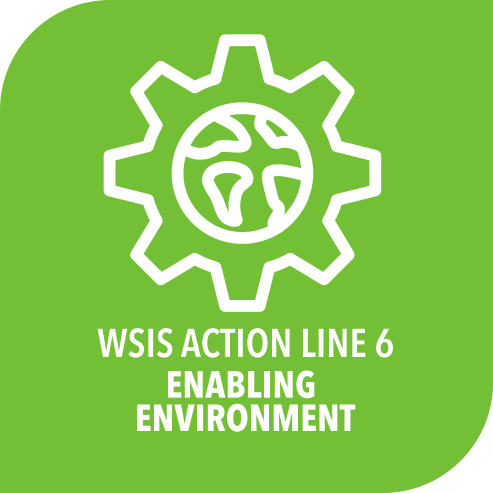 C6. Enabling environment
C6. Enabling environment
-
 C8. Cultural diversity and identity, linguistic diversity and local content
C8. Cultural diversity and identity, linguistic diversity and local content
The session focuses on LVDC, that is a key technology advancing energy efficiency, electricity access and ICT operations.
The impact of the session is two-fold:
1. It discusses the impact of a technology that influences energy goals, something that ultimately impacts all the UN Sustainable Development Goals. Efforts that contribute to enabling affordable and clean energy (SDG 7) within and beyond the context of ICT, can therefore help facilitate progress for all other economic, social and environmental development goals.
2. The session brings to light how governments, international bodies and regulators can work together to accelerate meaningful change in the emerging future of electricity.
-
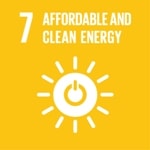 Goal 7: Ensure access to affordable, reliable, sustainable and modern energy for all
Goal 7: Ensure access to affordable, reliable, sustainable and modern energy for all
-
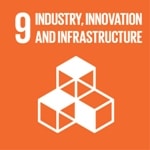 Goal 9: Build resilient infrastructure, promote sustainable industrialization and foster innovation
Goal 9: Build resilient infrastructure, promote sustainable industrialization and foster innovation
-
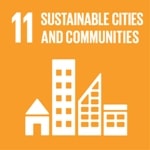 Goal 11: Make cities inclusive, safe, resilient and sustainable
Goal 11: Make cities inclusive, safe, resilient and sustainable
-
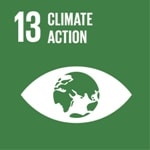 Goal 13: Take urgent action to combat climate change and its impacts
Goal 13: Take urgent action to combat climate change and its impacts
-
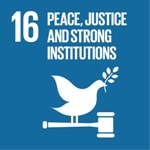 Goal 16: Promote just, peaceful and inclusive societies
Goal 16: Promote just, peaceful and inclusive societies
- IEC website (LVDC)
- IEC social media channels – Linkedin, Facebook, Twitter (X)
- LVDC brochure links:

